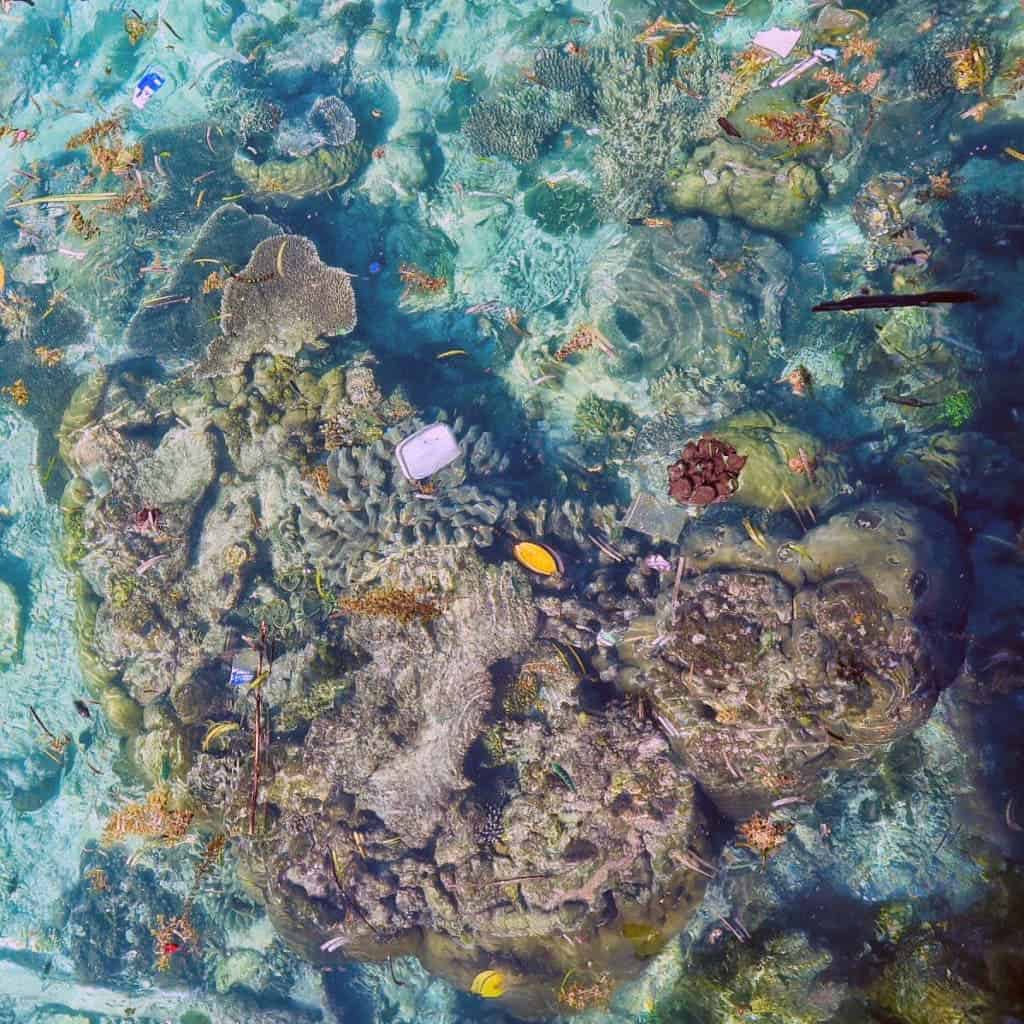A new study reports that about a third of all coral reefs are littered with plastic, with devastating consequences for the corals.

Too much
The world is producing an ungodly amount of plastic. Every year, millions of tons of waste end up in the oceans, where they remain indefinitely. Plastics are virtually indestructible, taking hundreds of years or even more to biodegrade completely. The ocean floor is like a cemetery for plastic, and marine wildlife is paying a huge price. This puts an additional stress on corals, which are already severely suffering from rising temperatures.
“The likelihood of disease increases from 4 percent to 89 percent when corals are in contact with plastic,” researchers report in the journal Science.
In order to assess how much plastic there is in the reefs, international researchers surveyed more than 150 reefs for four years (from 2011 to 2014). They found that one-third of them were contaminated with plastic — sometimes large patches of plastic garbage were visible.
“A lot of times we come across big rice sacks or draping plastic bags,” said Dr. Joleah Lamb of Cornell University in Ithaca, US., who led the study. “What we do find is these corals with a lot of complexity like branches and finger-like corals will become eight times more likely to be entangled in these types of plastics.”
However, the fact that so many big pieces of plastic were found around corals might also have an upside: it allows scientists to identify the sources of that plastic, and perhaps start tackling the pollution problem there.
“It’s sad how many pieces of plastic there are in the coral reefs …if we can start targeting those big polluters of plastic, hopefully, we can start reducing the amount that is going on to these reefs.”
Plastic ain’t fantastic

Plastic hurts coral in several ways. Firstly, it abrades them. Coral reefs are hotspots of life, including microscopic life such as bacteria. Plastic scrapes the surface of the corals, drastically raising the potential for infection. Secondly, plastic also blocks sunlight from reaching the corals, which can also pose a long-term threat.
In terms of the entire ecosystem, plastic can be devastating for the countless species which call reefs their home. Turtles and fish can mistakenly eat plastic debris and it’s estimated that more than 1 million seabirds die each year from ocean pollution and ingestion or entanglement.
With warmer waters causing already so much damage in the form of coral bleaching, plastic may very well be the last nail in the coffin for coral reefs. That might sound dramatic but researchers have already warned that unless we take massive action — and soon — most of the world’s corals are pretty much doomed.
However, it’s not too late to make a difference. Researchers have found that active environmental policies, especially concerning recycling, can have a big impact.
Australian reefs had the least amount of plastic observed on reefs, while other surveyed reefs in the Pacific area had much more plastic in and around them — probably because Australia is much stricter about what gets dumped in the ocean.
Meanwhile, Indonesia fared the worst when it came to plastic pollution.
“The country’s estimated amount of mismanaged plastics – so the way they deal with their plastic waste – was a strong predictor of how much we would see on the reef,” said Dr. Lamb.
In 2012, it was estimated that there was approximately 165 million tons of plastic pollution in the world’s oceans. Much of it is directly toxic to both marine life and humans, which is dangerous since it tends to build up along the food chain, and often ends up in our plates. A 2017 study found that 83% of tap water samples taken around the world contained plastic pollutants. We have a massive plastic pollution problem, with no solution in sight.
Journal Reference: Joleah B. Lamb et al. Plastic waste associated with disease on coral reefs. DOI: 10.1126/science.aar3320


